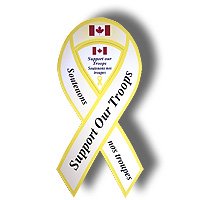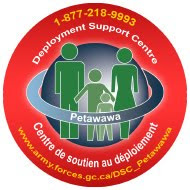Progress in Afghanistan: PRT
Thanks to Lisa, this information and further information can be found at: http://www.forces.gc.ca/si.
Afghanistan is making progress – unthinkable only a few years ago – which is a testament to the will and fortitude of the Afghan people, as well as the commitment and engagement of the international community. Because of our efforts, the Afghan people now vote, women and girls have rights, and children are going to school.
This progress has come at a price to Canada and the international community. Taliban and foreign insurgents have sought to undermine Afghan progress by indiscriminately attacking civilians, Afghan authorities and international forces.
Is Afghanistan Making Progress?
Afghanistan was a country whose infrastructure was almost completely destroyed by three decades of war and control by a repressive regime which denied women and young girls such basic rights as medical care and schooling. Five years after the fall of the Taliban, the progress in Afghanistan is remarkable by any standards.
The Afghan government has laid out a comprehensive plan for the country’s future called the Afghanistan National Development Strategy. The international community is supporting this initiative through the Afghanistan Compact, a five-year agreement between the Government of Afghanistan, the United Nations and the international community on three main pillars of Afghan need and focus: security, governance and rule of law/human rights. On November 29, 2006, the 192-member United Nations General Assembly adopted a resolution pledging to implement the Afghanistan Compact – described by some as an international Marshall Plan for Afghanistan. Some sixty nations are supporting the development fund with $10 billion in contributions so far.
Progress since 2001
- 4.6 million Refugees have returned to Afghanistan
- 14,000 community district councils have been elected
- Per capita income has doubled.
- The Afghan economy has tripled
- Two national elections have been held (Parliamentary and Presidential)
- More than 10 million Afghans voted
- 200,000 Afghans (90 percent women) have received Micro-finance business loans
- 7.2 million Children vaccinated against polio; 4.3 million vaccinated against childhood diseases
- 4 million women vaccinated against Tetanus
- 77 percent of Afghans have access to medical facilities – compared to less than 10 percent in 2001.
- 4,000 new medical facilities opened
- Six million children (one third girls) now go to school compared to 700,000 (no girls) in 2001.
- 363,000 teachers provided with teaching material
- 8,000 km of new and refurbished roads have been completed
- 2,500 villages have electricity for the first time
- 8,000 construction projects have been completed; 14,000 more are underway.
- 4,000 houses and shelters constructed for the needy
- 130 Agriculture projects (benefiting 300,000 farmers) actioned
- 60,000 soldiers disarmed and demobilized
- 190,000 mines defused and removed
- 8,100 new water points, 8,000 latrine blocks (benefiting 3 million people)
- 1,700 water reservoirs built
- Hygiene education to 3.4 million people
- 13 million days of community employment
THANK YOU!





























No comments:
Post a Comment